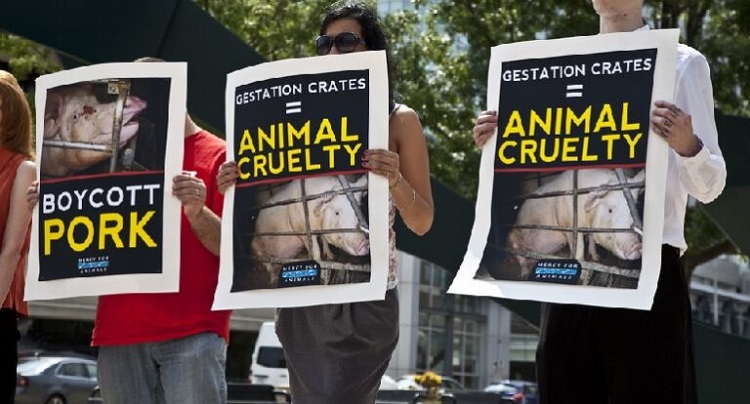Are our animal abuse laws too weak? This question elicits a myriad of responses, provoking deeper contemplation about the legal frameworks in place to protect non-human sentient beings. In an age where societal awareness of animal rights is escalating, one must critically examine the robustness of our legislation. Do current laws adequately deter cruelty, or do they merely serve as a bandage over a festering wound? In this discourse, we shall delve into the efficacy of existing animal welfare regulations, assess their shortcomings, and explore potential reforms to fortify protections for our vulnerable companions.
The landscape of animal cruelty legislation in the United States is heterogeneous, reflecting a patchwork of state laws, federal statutes, and varying enforcement measures. While some states boast robust anti-cruelty laws, defining and prohibiting acts of malfeasance against animals, others lag woefully behind. The lack of uniformity often fosters a jurisdictional race to the bottom where the weakest laws prevail, leaving countless animals without the necessary legal protections. But what constitutes adequate legal protection? Is it the severity of penalties, the comprehensiveness of definitions of abuse, or the commitment to enforcement?
Analyzing the scope of existing laws reveals glaring discrepancies. Federal legislation, such as the Animal Welfare Act (AWA), provides a regulatory framework that addresses specific areas of animal treatment, particularly concerning animals used in research, exhibition, and transport. However, the AWA does not extend its protective embrace to many domesticated animals, particularly those within private households. Companion animals, livestock, and wildlife often fall into gray areas without sufficient legal safeguards. How can we claim to honor the sentience of all animals while neglecting vast swathes under the current framework?
Moreover, the penalties associated with violations of animal welfare laws are often disproportionately lenient. In the vast majority of states, offenders may incur minimal fines or face short terms of incarceration. Such unequally imposed penalties often fail to deter potential abusers. For instance, when faced with the prospect of a mere slap on the wrist, an individual may view the risk of getting caught as negligible. This leads to a cycle where abuse continues unabated, perpetuating a culture of disregard for the lives of animals. What if, instead, we instituted more stringent penalties, including felony charges for severe cases of cruelty?
Furthermore, it is essential to consider the cultural attitudes toward animals that permeate society. Many individuals still view animals primarily as property rather than sentient beings deserving of rights and protections. This long-standing perspective hampers the advancement of more progressive animal welfare legislation. We must ask ourselves: How do we shift societal narratives in favor of more enlightened views regarding the intrinsic value of all life forms? Education and awareness campaigns offer one approach, fostering empathy and understanding through outreach initiatives. Such efforts might mobilize public opinion to support more comprehensive reforms.
In contemplating animal abuse laws and their potential reforms, it is also vital to scrutinize the enforcement mechanisms that accompany them. Without adequate funding, resources, and training for law enforcement and animal control officers, even the most well-crafted laws may fall flat. Many jurisdictions lack sufficient personnel to investigate reports of abuse effectively or to hold violators accountable. Thus, even in areas with robust legislation, the onus of enforcement remains a significant hurdle. What strategic enhancements can be made to ensure that enforcement is not only a legal obligation but a societal commitment?
Moreover, we must recognize the potential for intersectionality within the discussions surrounding animal rights. Those engaged in the fight against systemic oppression often draw parallels between the exploitation of vulnerable animals and marginalized human communities. By understanding that cruelty to animals often mirrors broader societal injustices, activists can forge alliances with other movements, creating a collaborative framework for reform that addresses both human and animal rights. This intersectional approach is imperative; it expands our comprehension of justice and equality beyond species lines.
In light of these considerations, what strategies might be employed to reform animal abuse laws effectively? Engaging in public discourse is a pivotal starting point. Advocacy groups can spearhead initiatives to petition legislative bodies, urging for the adoption of more stringent anti-cruelty laws. Grassroots movements can mobilize individuals to participate in demonstrations, raising awareness about the need for legal reform. Additionally, fostering partnerships with veterinarians, educators, and humane organizations can amplify the call for change, creating a multifaceted approach that resonates across various sectors of society.
Ultimately, the question remains: Are our animal abuse laws too weak? While existing frameworks offer some protection, they undeniably require substantial reform. A comprehensive review of legislation, thoughtful penalties that reflect the severity of abuses, improved enforcement mechanisms, and a cultural shift toward valuing all forms of life are all essential steps in this ongoing journey. As advocates for change, it is our collective duty to champion reforms that safeguard those who cannot advocate for themselves. Only then can we create an equitable future where all sentient beings are afforded the dignity and respect they inherently deserve.










